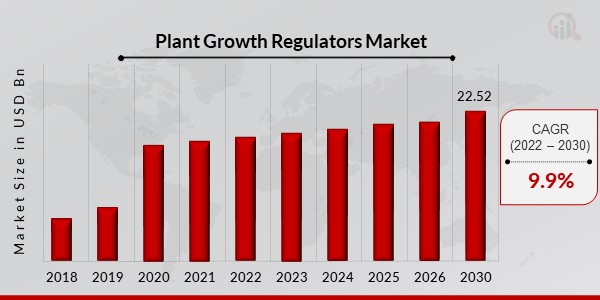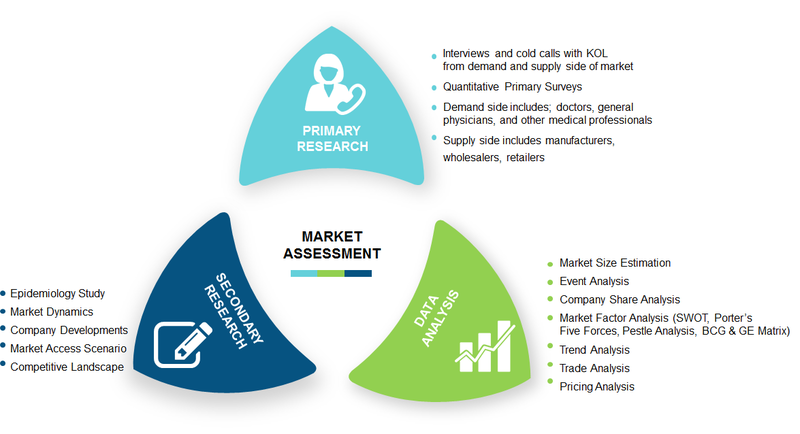Plant Growth Regulators Market Overview
The Plant Growth Regulators Market is projected to reach USD 22.52 Billion by 2032 at 10.0% CAGR during the forecast period 2023-2032. Plant growth regulators are chemical compounds that help in modifying physiological processes of plants. These growth regulators profoundly influence the growth and differentiation of plant cells, tissues, and organs. With the increasing growth of the agriculture industry, the demand for plant growth regulators has also been escalating. Plant growth regulators are applied to plants to produce the desired effect, identical to hormones. There are five major groups of plant growth regulators, namely, Auxin or Indole Acetic Acid (IAA), Cytokinin, Gibberellin or Gibberellic Acid (GA), ethylene, and abscisic acid. In considering the type of plant growth regulator, Cytokinin accounts for the major market share which is further followed by the Gibberellins in the North American plant growth regulators market. The cytokinins are used to produce cell division and retard senescence in plants. The cytokinins in combination with auxin lead to the production of undifferentiated cell masses called calluses. The gibberellins are required for seed germination and sex expression.

Plant growth regulators are not designed only to foster faster growth. Some are designed to slow down the growth of plants and keep them young for easier transportation and transplantation.
This market is expected to have enormous opportunities in the upcoming years as new developments for effective farming is on the rise.
Notably, rising research funding in agriculture is the key factor driving the North American plant growth regulators market. It has been observed that the U.S. private sector funding in food and agricultural R&D has risen over the last decade, surpassing the public-sector funding. Whereas, falling public sector funding for agricultural R&D and greater spending by some other nations have diminished the U.S. share in public agricultural R&D worldwide. According to the United States Department of Agriculture, the U.S. was leading with 20 to 23% of the global total between 1990 and 2006, among major countries with substantial investments in R&D for agriculture. However, by 2013, this share had fallen to 13%, but the U.S. remains the top producer of R&D outputs by several measures. It is also reported that out of total expenditure, i.e., USD 16.3 billion, on food and agricultural R&D in 2013, funding from the federal government was around USD 2.8 billion, i.e., 17.2%. Whereas, the states accounted for USD 1.0 billion, i.e., 6.1%.
Various other push factors such as increasing awareness of plant growth regulators among consumers, technological advancement, rising practice of organic farming, growing demand for herbal medicine, increasing government assistance, and amendments in the regulatory framework, are continuously contributing to the growth of the North American plant growth regulators market.
Despite these drivers, there are some issues associated with the North American plant growth regulators market. Misuse of technology, stringent regulations pertaining to pesticides, and risk associated with products, may hamper the market growth.
Research Methodology

Sources: Annual reports, Press release, White paper, and Company presentation
Intended Audience
- Pharmaceutical Companies
- Research and Development (R&D) Companies
- Diagnostic Laboratories
- Government Research Institute
- Academic Institutes and Universities
Plant Growth Regulators Market Segment Insights
The North America plant growth regulators market is segmented on the basis of origin, crop type, type of plant growth regulator, formulation, and function.
On the basis of origin, the market is segmented into biological and synthetic
On the basis of crop type, the market is classified into pulses and oilseeds, grains and cereals, fruits and vegetables, turf and ornamentals, and others.
On the basis of type of plant growth regulator, the market is classified as auxins, cytokinins, gibberellins, ethylene, and abscisic acid.
On the basis of formulation, the market is classified as water-dispersible and water-soluble granules, solutions, and wettable powders.
On the basis of function, the market is segmented into plant growth promoters and plant growth inhibitors.
Regional Analysis
On a regional basis, the North American plant growth regulators market is segmented into two major regions, namely, the U.S. and Canada. The U.S. holds a major share of the North American plant growth regulators market owing to the well-established healthcare system, increasing agriculture expenditure, and favoring funding and reimbursement policies. According to the statistics suggested by the United States Department of Agriculture, the farm production expenditures in the United States was USD 346.9 billion in 2016. It is also reported that the United States total farm expenditure average per farm was USD 169,035.
Key Players
Some of the key the players in the North American plant growth regulators market are
- ADAMA (Israel),
- Arysta LifeScience (France),
- Nufarm (Australia),
- BASF (Germany),
- Bayer CropScience (Germany),
- Dow Chemical (US),
- Nippon Soda (Japan),
- Sumitomo Chemical (Japan),
- Syngenta (Switzerland),
- FMC Corporation (US),
- Tata Chemicals (India),
- Valent Biosciences (US),
- WinField Solutions (US),
- Xinyi Industrial (China),
- and others.
|
Report Attribute/Metric
|
Details
|
|
Market Size
|
USD 22.52 Billion
|
|
CAGR
|
10.0% (2023-2032)
|
|
Base Year
|
2022
|
|
Forecast Period
|
2023-2032
|
|
Historical Data
|
2021
|
|
Forecast Units
|
Value (USD Billion)
|
|
Report Coverage
|
Revenue Forecast, Competitive Landscape, Growth Factors, and Trends
|
|
Segments Covered
|
origin, crop type, type of plant growth regulator, formulation, and function.
|
|
Geographies Covered
|
North America
|
|
Key Vendors
|
ADAMA (Israel), Arysta LifeScience (France), BASF (Germany), Bayer CropScience (Germany), Dow Chemical (US), Nippon Soda (Japan), Nufarm (Australia), Sumitomo Chemical (Japan), Syngenta (Switzerland), FMC Corporation (US), Tata Chemicals (India), Valent Biosciences (US), WinField Solutions (US), Xinyi Industrial (China), and others.
|
|
Key Market Opportunities
|
Increasing adoption of organic farming practices driving demand for bio-based plant growth regulators.Top of Form
|
|
Key Market Drivers
|
Rising adoption of sustainable agricultural practices to mitigate environmental impact.
|
North America Plant Growth Regulators Market Highlights:




























